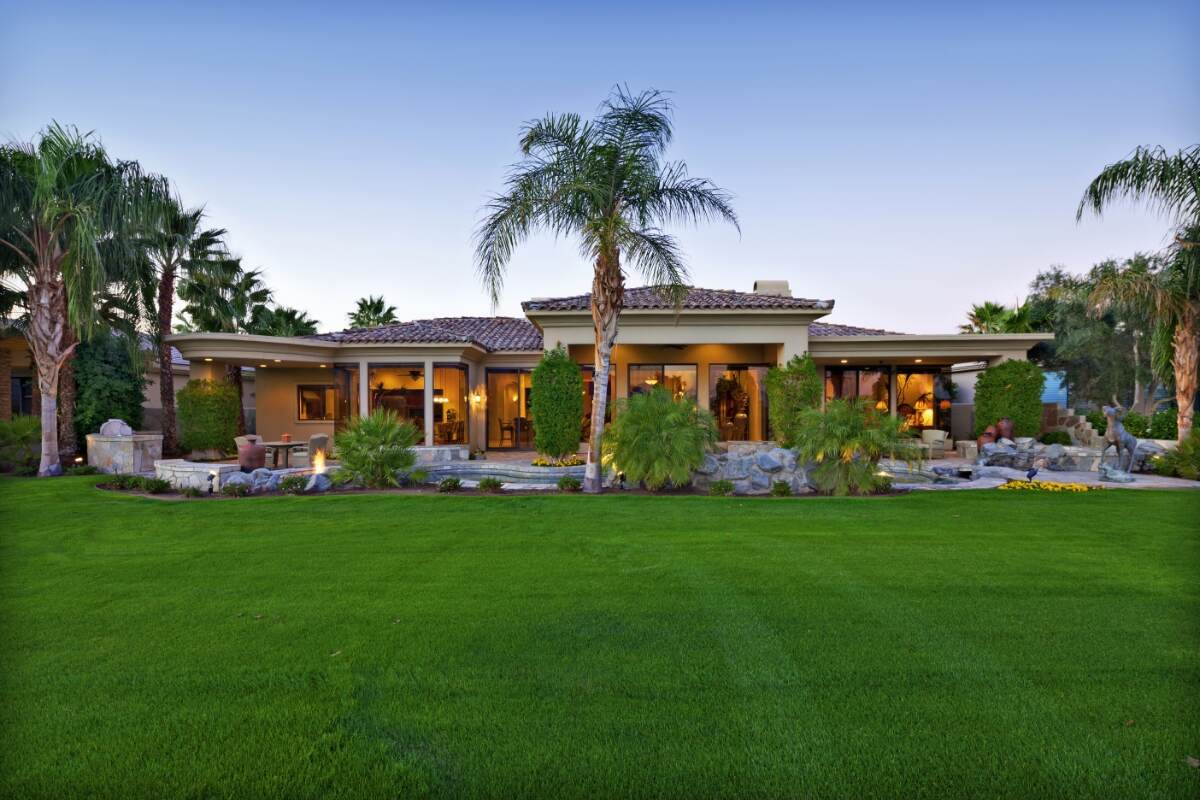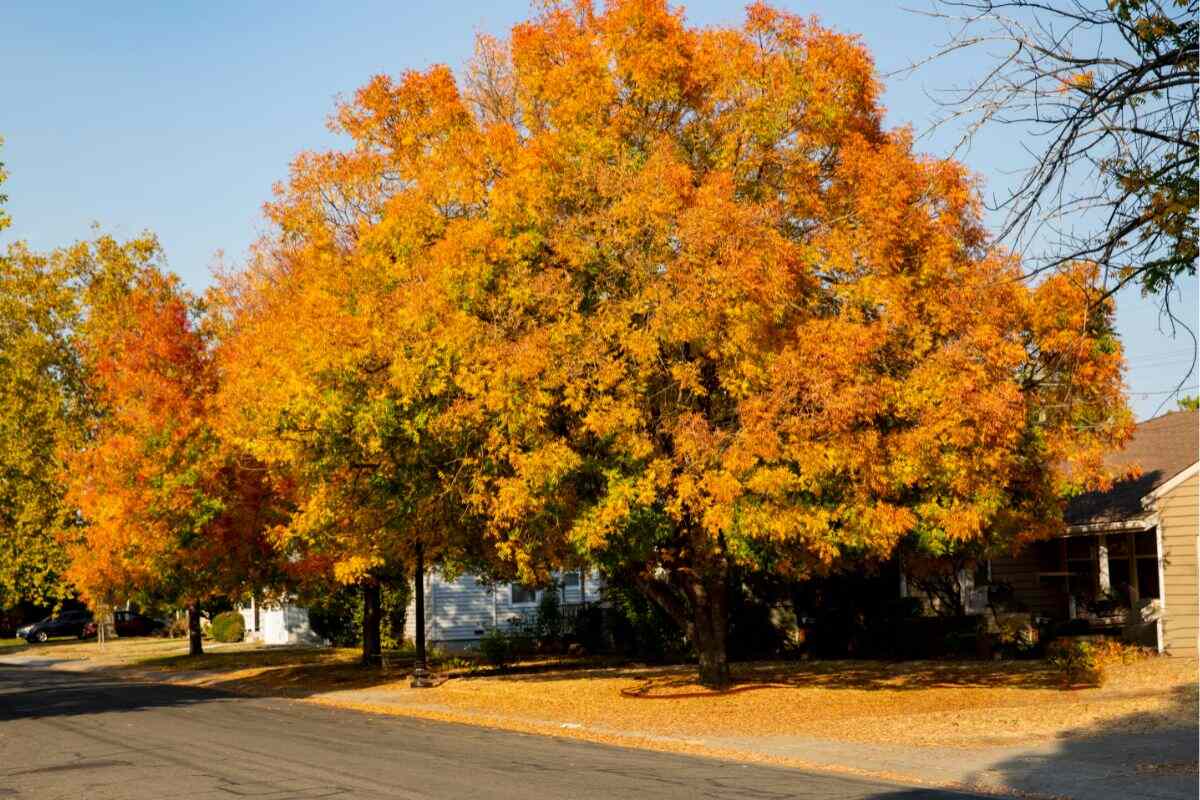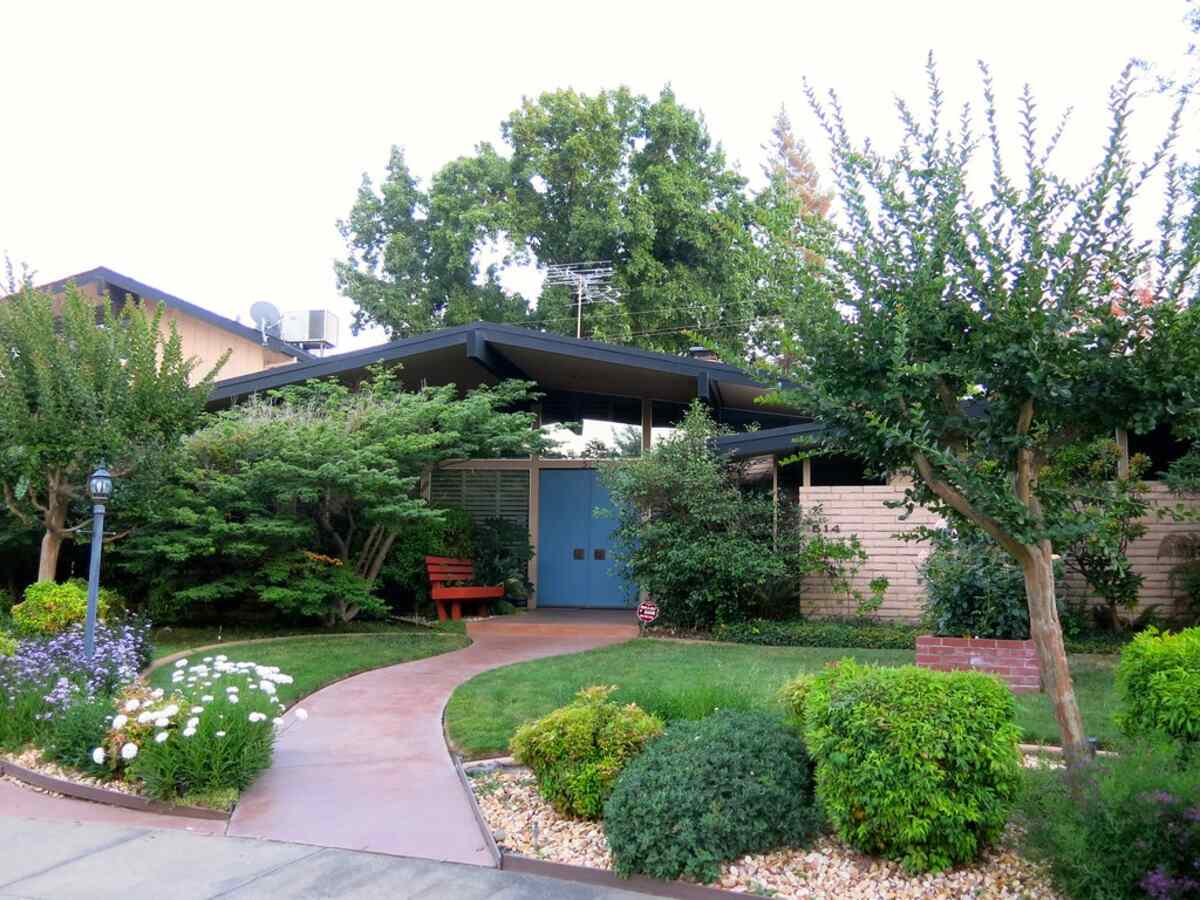
Although it’s mostly known for its lovely Mediterranean climate, California’s temperatures can reach blazing highs and almost-freezing lows. As such, there are a variety of grasses – both warm-season and cool-season grasses – that can thrive in the Golden State. However, that doesn’t mean that you can plant any old turf on your lawn. Choose one of the best grass types for California to get the best lawn possible.
Some parts of California are hotter and have drought conditions, while others have colder temperatures that hurt warm-season grasses. Here is a list of the best types of grass for California and why they work well in the Golden State, plus which grass types work best for Northern, Southern, and Central California.
Bermudagrass (Cynodon species)

This warm-season grass is often used in golf courses, but it’s also very common in Californian lawns. There are many varieties of Bermudagrass, each with a a slightly different set of characteristics.
Pros: Bermudagrass is popular with homeowners because it can handle a lot of foot traffic and because of its excellent heat and drought tolerance. It can also tolerate the cold well despite being a warm-season grass, so it isn’t too out of place in Northern California.
Cons: It’s a fast-growing and high-maintenance turfgrass; it needs frequent mowing, dethatching, and fertilization, and it often invades your landscape beds. Aside from that, it also has poor shade tolerance and needs full sun to survive. Lastly, although it can handle the cold, it goes dormant and turns brown whenever the temperature gets too low.
- Classification: Warm-season grass
- Spreads Through: Aggressively through stolons (above-ground stems) and rhizomes (below-ground stems)
- Tolerances
- Shade: Low. Keep in full sun
- Drought: High
- Foot Traffic: High. Recovers quickly from damage
- Diseases and Pests: Good resistance to disease, but diseases are common; low resistance toward insects.
- Maintenance Needs: Needs frequent mowing due to fast growth rate, develops thatch easily, and needs regular fertilization
- Mowing Height: ½ to 1 ½ inches for hybrid cultivars, 1 ½ to 2 ½ for common Bermudagrass
- Soil pH: 6 to 6.5
- Soil Type: Tolerates most soil types
The University of California Statewide Integrated Pest Management Program lists a few cultivars of hybrid Bermudagrass that you can use in your garden: Tifgreen, Tifway II, and Santa Ana. They’re all rather similar, but the first two are better at keeping their color in the winter, while the last one handles smog better.
Grass Seed Options:
– Pennington Bermudagrass Bare Spot (5 lb. bag)
– Pennington Smart Seed Bermudagrass Mix (8.75-lb. bag)
– Scotts Turf Builder Bermudagrass (10-lb. bag)
– Hancock Seed Co. Bermudagrass (50-lb. bag)
Tall Fescue (Festuca arundinacea)

Turf-type tall fescue is a cool-season grass with a coarse texture. This turfgrass has wide, dark green grass blades and is very popular throughout the Golden State, even in the hotter parts of Southern California.
Pros: Although tall fescue is a cool-season grass, it’s quite a drought-resistant one; it can also handle a lot of wear and tear, disease, and heat. Thanks to its deep roots, tall fescue is also very low maintenance, thriving even in the face of mild neglect. Lastly, it stays green all year round, unlike warm-season grasses.
Cons: While tall fescue can tolerate drought well, it will become dormant when faced with an extended drought. Unlike other grasses, dormancy isn’t something this turfgrass can shake off easily. It recovers very slowly, needing to be overseeded when it sustains significant damage.
- Classification: Cool-season grass
- Spreads Through: Weakly through rhizomes, grows in bunches
- Tolerances
- Shade: Moderate
- Drought: Moderate to high, but extended drought will really hurt it
- Foot Traffic: Moderate
- Diseases and Pests: Moderate
- Maintenance Needs: Needs frequent mowing, especially in the spring
- Mowing Height: 2 inches, but only mow when the grass reaches 3 inches tall
- Soil pH: 5.5 to 6.5
- Soil Type: Tolerates a variety of soil conditions but does best in well-draining fertile clay soils
Grass Seed Options:
– Triple-Play Tall Fescue Grass Seed Blend (5000 sq ft)
– Eretz Kentucky 31 K31 Tall Fescue Grass Seed (choose your size)
– Pennington The Rebels Tall Fescue Grass Seed Mix (7 lb.)
Zoysiagrass (Zoysia species)

This warm-season grass is a good choice for homeowners that don’t want to exert a lot of effort on their lawns. Zoysiagrass is deep emerald green, dense, and rather stiff. In California, two species of Zoysia are common: Zoysia tenuifolia and Zoysia japonica.
Pros: Unlike Bermudagrass, Zoysiagrass grows slowly, so it doesn’t need a lot of maintenance. It also has good tolerance to foot traffic, drought, heat, salt, and cold, and it can also handle a little shade.
Cons: While Zoysiagrass is cold-tolerant, it is slower to green up once spring comes around. Because it grows slower, it also recovers slower when faced with diseases. Despite this slow growth, it’s prone to developing thatch and to spreading into your flower beds.
- Classification: Warm-season grass
- Spreads Through: Stolons and rhizomes
- Tolerances
- Shade: Moderate
- Drought: Moderate to High
- Foot Traffic: High
- Diseases and Pests: Good resistance to disease but recovers slowly
- Maintenance Needs: Doesn’t need a lot of fertilizer; it develops thatch easily when overfertilized
- Mowing Height: 1 to 2 inches
- Soil pH: 6 to 6.5
- Soil Type: While some cultivars tolerate various soil types, Zoysiagrasses typically prefer well-draining soils
Grass Plug and Seed Options:
– Zoysia Plugs (50 Large Grass Plugs)
– Zoysia Plugs (50 Full & Lush Grass Plugs)
– Zoysia Plugs (100 Plugs)
– Zoysia Emerald Grass Seeds (1/8 lb. of seeds)
– Zenith Zenith Grass Seeds (1/8 lb. of seeds)
St. Augustinegrass (Stenotaphrum secundatum)

Dense and coarse, St. Augustinegrass is a blue-green to medium-green warm-season grass that’s great for homeowners living near the coast. It’s quite salt-tolerant, so it’s one of the best grass types for Los Angeles and other coastal cities with salty air.
Pros: Once established, it’s almost indestructible, resisting heat, drought, pests, weeds, and disease quite well. It’s also one of the most shade-tolerant warm-season grasses out there, so it won’t suffer in a lawn with trees. Lastly, it grows fast.
Cons: Unlike Zoysiagrass and Bermudagrass, St. Augustine isn’t very cold-tolerant, nor can it handle foot traffic all that well. It also requires more lawn care than Zoysiagrass, needing frequent mowing and dethatching.
- Classification: Warm-season grass
- Spreads Through: Stolons
- Tolerances
- Shade: Moderate. Most shade-tolerant warm-season grass
- Drought: Moderate to high, but it will need water to stay green during drought
- Foot Traffic: Low
- Diseases and Pests: Moderate to High
- Maintenance Needs: Needs frequent mowing due to fast growth rate; develops thatch easily; needs regular fertilization (2-6 applications from spring to fall)
- Mowing Height: 3 ½ to 4 inches
- Soil pH: 6 to 7.5
- Soil Type: Tolerates most soil types but prefers moderately fertile, moist soil. Doesn’t like compact soils.
Grass Plug Options:
– Seed Ranch St Augustine Seville Grass Plugs (2 Trays)
– Seed Ranch St Augustine Floratam Grass Plugs (2 Trays)
Buffalograss (Buchloe dactyloides)

Although buffalograss is typically found in the Great Plains, there is a variety that thrives in the Golden State. Formerly known as “UC Verde” buffalograss, California buffalograss (Buchloe dactyloides ‘UC Verde’) was developed by researchers to withstand West Coast droughts. Unlike most other grasses, this warm-season grass can only be propagated through plugs.
Pros: California buffalograss is very low maintenance; you only need to mow it every 2 to 3 weeks, and it’s drastically less thirsty than other grasses. It’s also quite resistant to weeds and doesn’t need a lot of chemical treatments for fungi and insects.
Cons: Like most warm-season grasses, buffalograss goes dormant in the winter, turning it brown. It also doesn’t tolerate shade well.
- Classification: Warm-season grass
- Spreads Through: Stolons
- Tolerances
- Shade: Low
- Drought: Very high, but it will turn brown in the summer if you don’t water it
- Foot Traffic: Moderate
- Diseases and Pests: Moderate to High
- Maintenance Needs: Very low maintenance, needing little water; only needs to be mowed every 2 to 3 weeks but can also be left unmowed if you want a meadow look
- Mowing Height: 1 to 1½ inches, but can be left unmowed
- Soil pH: 6.5 to 7.5
- Soil Type: Prefers clay soils
Grass Seed Options:
– Everwilde Farms Buffalograss Seeds (1 lb. of seeds)
– Scotts Pursue Buffalograss with Natural Seed (1 lb. of seeds)
– Outsidepride Perennial Buffalo Grass Seed (2 lb. of seeds)
Best Grass Seed for Northern California
Northern California is part of the Pacific Northwest, which is cooler and wetter than the rest of the Golden State. As such, many cool-season grasses like Kentucky bluegrass, colonial bentgrass, perennial ryegrass, and fescue grasses (tall fescue and fine fescue) do well in Northern California. You can also use Bermudagrass if you don’t mind it going dormant in the winter.
If you live near San Francisco, check out our article on the best grass for the Bay Area.
Best Grass Seed for Southern California
Southern California tends to be very hot and dry, so homeowners in this part of the state should invest in heat-tolerant and drought-resistant grasses like Zoysiagrass, Bermudagrass, St. Augustinegrass, California buffalograss, and Kikuyugrass. You can also use tall fescue if you prefer grass that can stay green throughout the year.
While not a turfgrass, you might want to consider sand dune sedge as a landscaping grass option.
Best Grass Seed for Central California
Central California has less extreme temperatures than either Northern or Southern California. However, it can still get rather hot, so Bermudagrass, St. Augustinegrass, Zoysiagrass, and tall fescue are good turf choices for this part of the state.
FAQs About the Best Types of Grass for California
While most of California is in the transition zone, parts of the state are actually above and below the transition zone. That’s why both warm-season and cool-season grasses thrive in California lawns.
The transition zone is a growing region spanning through the middle of the US. In the transition zone, both cool-season and warm-season grasses can grow. While there isn’t as much of a challenge in lawn care compared to growing warm-season grasses in cool-season zones and vice versa, special care still needs to be taken to make sure your grass can weather the hotter or cooler temperatures of the transition zone.
The best time to plant grass seed in California depends on the type of grass that you want to grow. Warm-season grass should be planted from mid to late spring, while cool-season grasses should be planted in the fall or spring.
If you want to beautify your California property with some new green additions, then you should consider growing native California plants.
Why native plants? Since they’re native to the region, they have already adapted to the conditions of the Golden State. This usually means they’re easier to care for compared to non-native plants.
Grow a Beautiful California Lawn Today
Many homeowners dream of a green lawn, and Californians are no exception. Choosing the right type of grass for your home is a key part of attaining this goal, but it’s definitely not the only factor. To maintain a lush lawn, you have to be on top of your lawn care.
Proper lawn mowing, fertilization, and weed control are important components of a regular lawn care schedule. Wondering what time of year is best for these important lawn care tasks? Start learning with our article about when to fertilize your lawn in California.
If you’re worried about not being able to care for your California lawn, why not consider hiring a professional lawn care service? They can mow your lawn and take care of all the fertilization and weed control while you enjoy the wonders that the Golden State has to offer. We have a lawn care pro near you no matter if you’re in Los Angeles, San Diego, San Jose, Fresno, San Francisco, Sacramento, or any of the other lovely cities of California.
LawnStarter participates in the Amazon Services LLC Associates Program, an affiliate advertising program. LawnStarter earns revenue from products promoted in this article.
Main Photo Credit: IPGGutenbergUKLtd / Canva Pro / License




